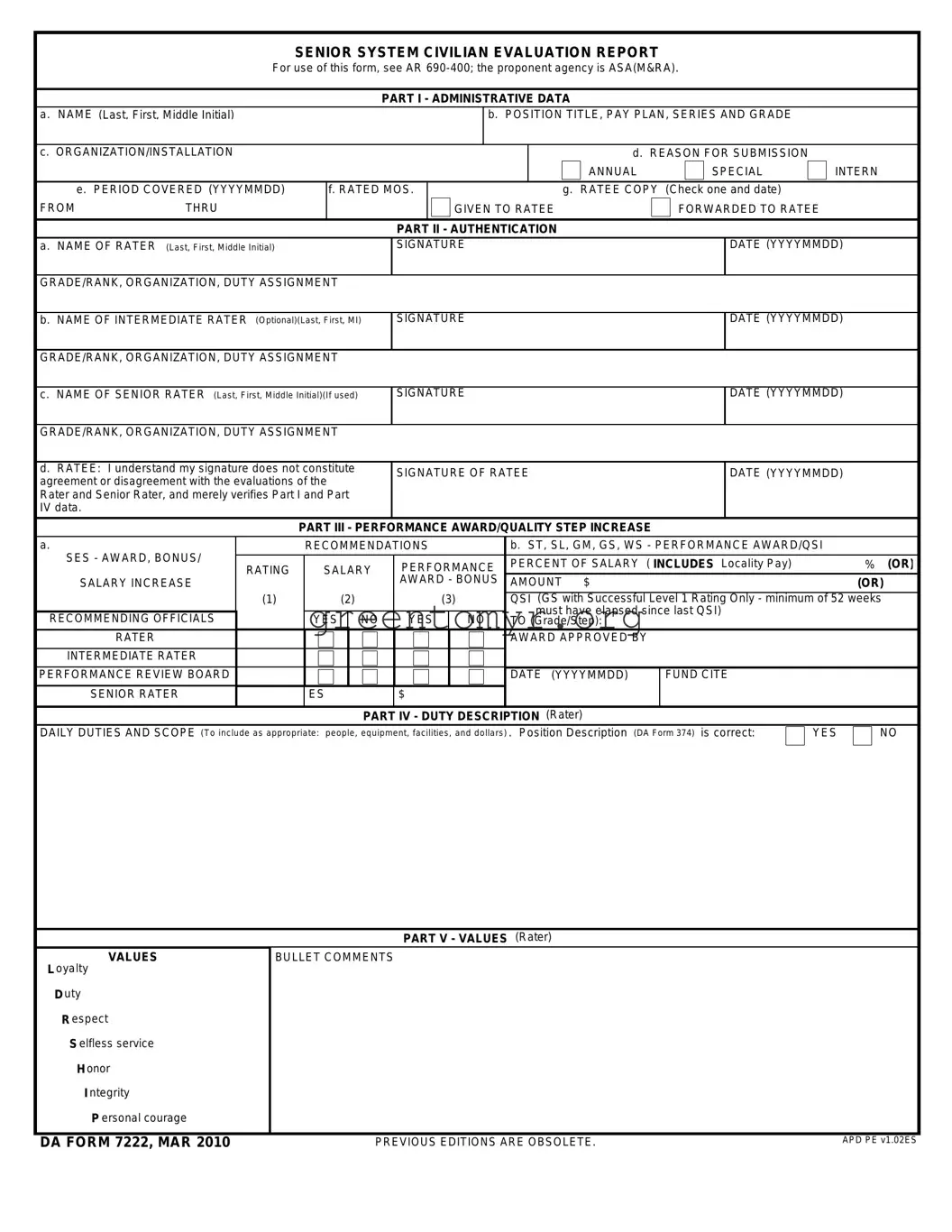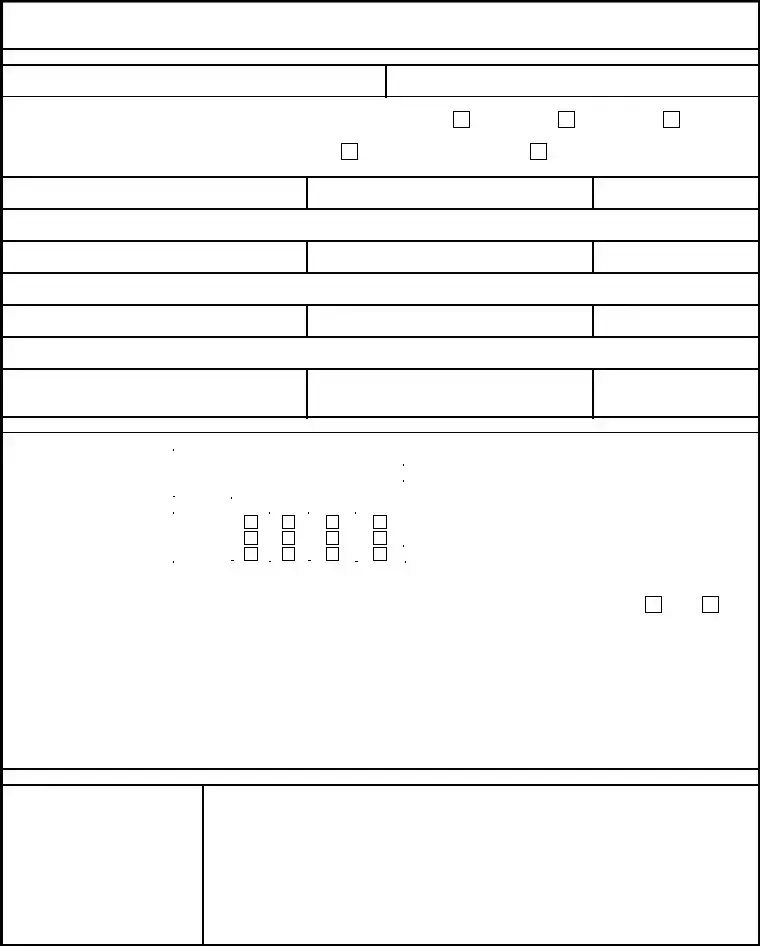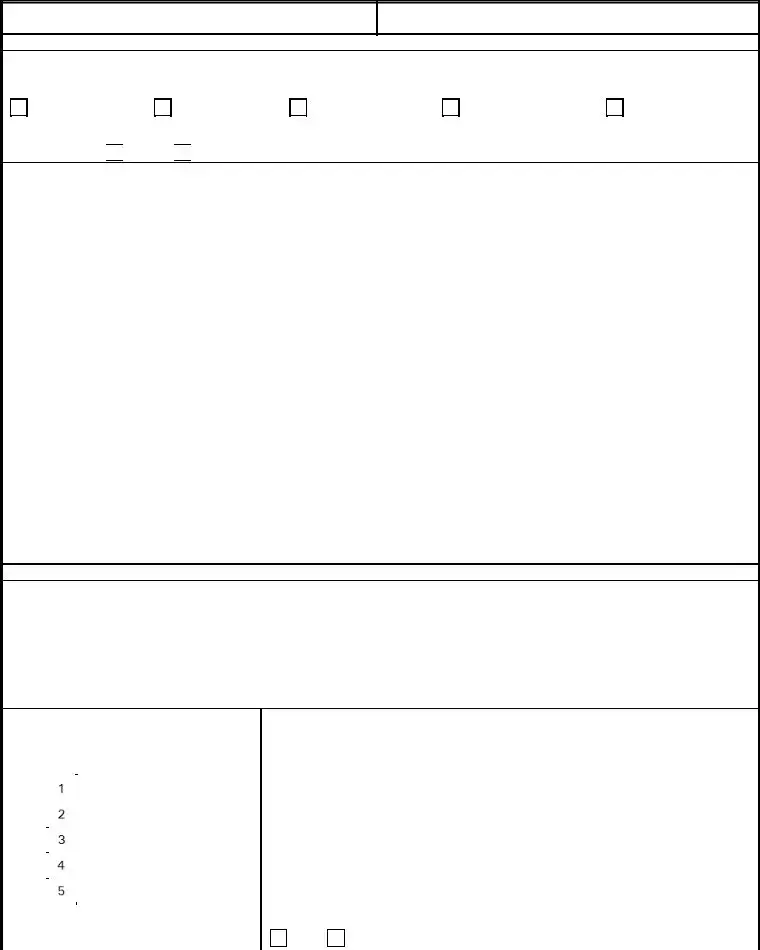The DA 7222-1 form is the Senior System Civilian Evaluation Report. It is used to evaluate the performance of civilian employees within the U.S. Army. This systematic form captures important information regarding an employee's duties, performance standards, and recommendations for awards or salary increases.
The form must be completed by the employee’s rater, usually a supervisor or manager. They assess the performance of the employee over the specified period and complete various sections of the form. If applicable, intermediate raters and senior raters may also provide input.
Part I includes administrative data such as the employee's name, position title, organization or installation, reason for submission, and the period covered by the evaluation. This section establishes the key details needed for the evaluation process.
In Part VI of the form, the rater assesses the employee's performance based on individual objectives and accomplishments. The rater assigns ratings and provides comments that reflect how well the employee met established performance standards. There are several ratings, such as Excellence and Needs Improvement, to help categorize performance.
What types of awards or increases can be recommended?
The rater may recommend performance awards or quality step increases in Part III of the form. This section allows the rater to specify the types of awards, such as bonuses or salary increases, as well as associated details like the percentage of salary increase or the bonus amount.
Is the signature of the ratee required?
Yes, the ratee must sign the form in Part II. However, this signature does not indicate agreement or disagreement with the evaluations. Instead, it confirms that the ratee has reviewed the administrative data in Parts I and IV.
What happens if a senior rater is not involved?
If a senior rater is not used, the rater must still complete their evaluation, and this is indicated in the relevant sections of the DA 7222-1 form. Nonetheless, the involvement of a senior rater can offer an additional layer of review and insight into the employee's performance.
Bullet comments are concise statements that capture significant achievements, challenges, or behaviors of the employee during the evaluation period. They are essential because they provide clear, specific examples that support the performance ratings and give context to the evaluations.
The form is typically submitted on an annual basis or at the time of a special evaluation. The period covered by the evaluation is indicated in Part I to clearly define the timeframe of the assessment.
The form can often be found on official Army websites or human resources platforms. It is important to ensure that the most recent version is used, as previous editions may be obsolete.




 Yes
Yes 
 No
No